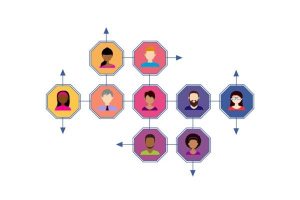The middle of the year always brings a sense of anxiety and worry to both managers and employees alike. Performance reviews are an unequivocal pain in the butt for everyone involved. Tedious processes, long forms, emotionally exhausting meetings and unsatisfactory outcomes for everyone make performance reviews something we all avoid.
But the truth is, it doesn’t have to be this way. For years, the performance review process has been the same. Once a year (twice if you’re lucky) you meet with each and every employee and tell them how they’ve been doing, what they’re doing wrong, dredging up old mistakes (that could have been learning opportunities) and forgetting successful projects or wins from earlier in the year. Rarely effective for learning or bonding, these antiquated performance review practices simply haven’t kept up with today’s modern worker or manager.
Instead, weekly check-ins, goal and value alignment and constant guidance are what your employees need. But as a busy manager, you really don’t have time to manage reviews weekly. That’s why iRevü is here. Our mobile-friendly platform not only allows you to give near real-time feedback, but you can get feedback from your people, align your employees to company values and even roll all your communications about performance into your annual or semi-annual performance reviews (Psst! You can get a month free to prove it!). Here’s how iRevü will transform your feedback:
Ditch Annual, Go Continuous
Again, how can you really evaluate performance if you only talk to your employees once or twice a year? It’s simple — you can’t. And, maybe you think that this system works for you. But, times are changing, and the facts are that 65% of employees want more feedback. Those scarce meetings throughout the year just aren’t cutting it anymore.
The problem is, who has time to meet with employees throughout the week? We know your schedule is crazy, but that’s why our platform is the best solution. Our mobile app lets you discuss feedback and performance anytime and anywhere. Your employees deserve continuous feedback and recognition. In fact, 78% of employees said being recognized helps motivate them. You don’t have to schedule a meeting, or even leave your lunch to address a problem or give accolades to someone knocking it out of the park. Just select, type, attach a value and send. The system records it all so if you want to keep your annual reviews you can get a true picture of your employee’s performance.
Enhance Data Collection
With reviews come data, right? Performance, productivity, cost-efficiency — these are just some of the things performance reviews are able to dive into as a way to ensure you and your team are being as efficient as possible. However, it can be hard to figure out numbers when you only meet a few times a year. What about the data from other months?
When reviews are spaced and performance isn’t constantly monitored, you generate performance data black holes where you are seemingly unaware how productive and profitable your team is. That’s where iRevü comes in handy.
With our continuous 360 performance review management features, you can easily capture data insights that help you cut-back on lost productivity. Studies have shown that disengaged staff can lead to a 45% increase in service issues. That’s a huge issue. But, with iRevü, you can ensure that your team is constantly engaged while you track data to stop problems in their tracks. Because it’s the world’s simplest performance feedback system, you can train colleagues and managers to leave feedback as well (both accolades and constructive) and create visibility patterns for management’s eyes only.
Assess Employees And Yourself
This just in: employees aren’t the only ones that need to be assessed. As managers and leaders, you need to be open to learn and develop along with your team. By feeding into your employees’ demands for feedback, you’ll make them comfortable enough to start giving you and your management colleagues feedback, which creates a feedback loop with transparency and efficiency.
According to Fast Company, nearly 70% of young employees feel confident that performance reviews can help them learn and grow. So, image the benefits that can be applied to you as well! This upward and 360-degree feedback means easier communication and better leadership for you and your team.
To help you get started, iRevü has created a resource so you can see what leadership skills you need to improve on. Once you understand problem areas and are able to make adjustments, using continuous feedback and performance management can keep track and monitor your own performance by obtaining upward feedback from your employees.
Set Goals
Speaking of leadership, continuous feedback and performance management, using real-time, 360-degree feedback is a great avenue for managers and employees to set realistic, attainable and company-oriented goals. With the ease of iRevü’s mobile communication functions, managing the improvement progress on both sides of the coin (i.e. managers and employees) becomes one seamless transition from identifying goals to achieving them.
I bet you’re thinking, “That sounds great and all, but how does this really look mapped out?” It’s simple. In a typical, old-fashioned performance review, managers and employees leave the meeting with all the feedback they can shoulder. Most of it probably goes in one ear and out the other for reasons like disengagement or lack of proper recognition. The takeaway here is that all that feedback, whether it’s considered good or bad, is a potential tool for improvement when paired with a continuous feedback process as opposed to a single, annual meeting — with iRevü’s platform, we call this microfeedback.
Studies show that 69% of employees say they would work harder if they felt their efforts were better recognized. One way to help employees feel recognized is to work with them to set goals that lead the way to the appreciation they desire. For example, if Mike from Accounting feels disengaged at work, reviewing what goals he can shoot for provides a path for him to achieve praise and acknowledgment Checking in with him and providing feedback as he progresses lets him know his goals are valued.
Like we mentioned earlier, having an already busy schedule doesn’t make managing this process an issue. Setting goals can be as easy as a 15-second reply to an employee from your mobile device during lunch or between projects. The steady stream of quick communication extends the life of what would normally be condensed into a 30-minute to an hour performance review meeting that only takes place once or twice a year.
Track Progress
Maintaining constant communication makes regular check-ins, updating records and dishing out praise or advice as simple as hitting a send button in a chat messenger. As a manager, and maybe even as an employee, keeping an updated record of progress with microfeedback means a) less paperwork for you and b) instant updates on how everything is moving along.
Annual meetings lose all relevancy when goals are works in progress and when employees need constant feedback to succeed. The proof is in the numbers: 43% of highly engaged employees receive feedback at least once a week.
Say, for example, you, as the manager, need to update Cheryl from Design on how she’s been improving the heck out of her time management skills. Tracking the progress towards her goals is as simple as looking back through previous feedback and seeing what she’s been improving over time. Then, you ping her some new feedback on iRevü letting her know how well she’s been crushing it, which updates the path to the ultimate goal with another step up the improvement ladder. Way to go, Cheryl! But the best part is that the whole process maybe took you five minutes and now Cheryl has new inspiration to motivate her engagement with the company. It’s the ultimate win-win.
Manage The Process
One of the main benefits from switching to digital performance management is the ease of maintaining documents, feedback and responses. iRevü facilitates all these in one system. When you need to refer to feedback in order to keep up to date on the progress of achieving goals, iRevü already has it all documented for you.
But going digital is more than just going paperless. You’re still creating records, they’re just easier to collect and store because they’re chat logs, feedback messages and e-documents sent and received on iRevü. What makes this vital to setting performance goals is that managing the improvement process with digitized microfeedback keeps growth continuous. You don’t water plants once a year to help them grow, do you? Definitely not if you want that green thumb. Performance reviews and performance management function in the same way — employees and managers both need a steady stream of feedback to grow.
Keeping with our theme of continuous growth here, probably the best reason to add goal setting to your list of changes to your performance review system is that it doesn’t just improve employees or managers, it affects the entire organization. Think of the process of managing goals and improvement as a Rubix Cube: every shift and change impacts every decision before and after. The Rubix Cube itself represents overall company goals while each tile or set of tiles represents a different employee and/or department of employees. In order to match the colors and create a congruent pattern, all tiles need to be in alignment with the bigger picture. In other words, achieving an employee’s goal works toward achieving company goals.
That’s where microfeedback, goal-setting, performance reviews and the whole shebang comes into play: the performance management process is one giant, rotating Rubix Cube and requires more than just annual meetings and scarce feedback to become one, congruent whole.
Business & Finance Articles on Business 2 Community(61)
Report Post



